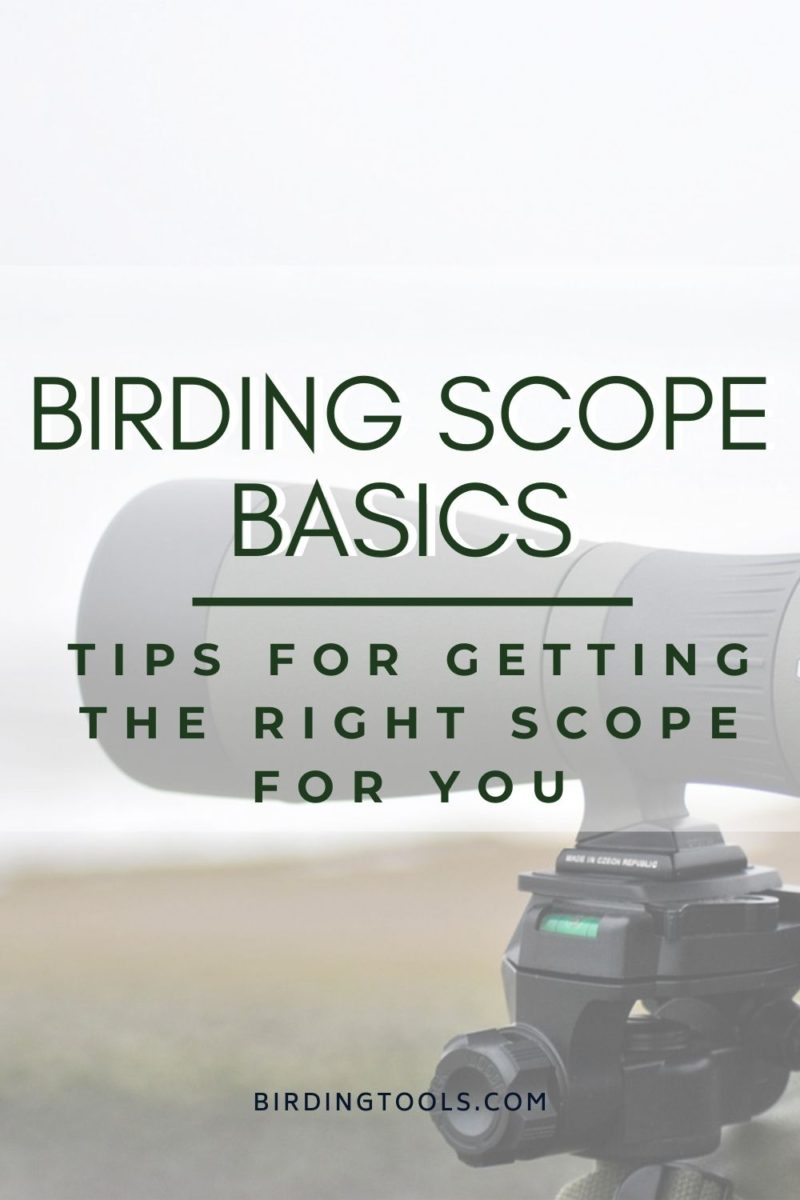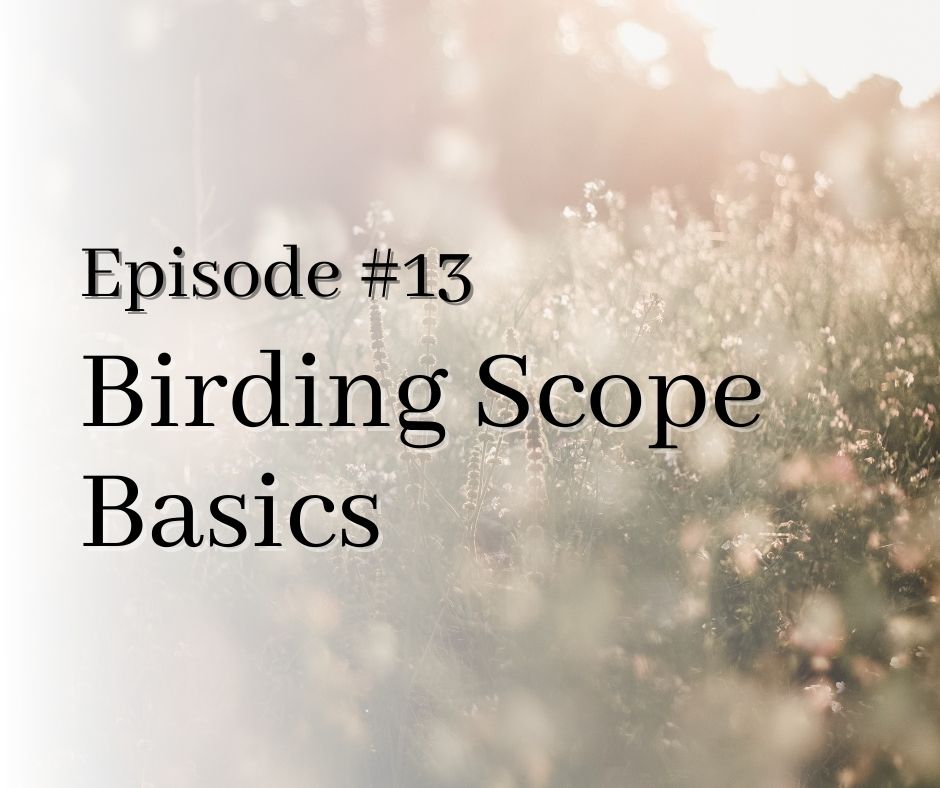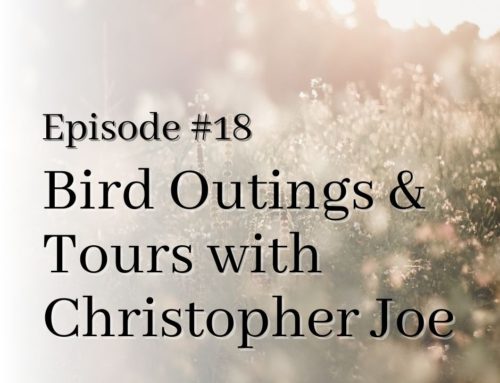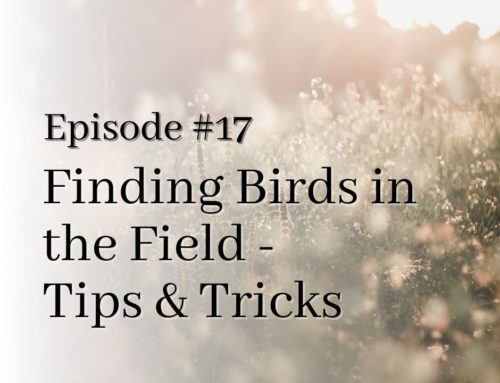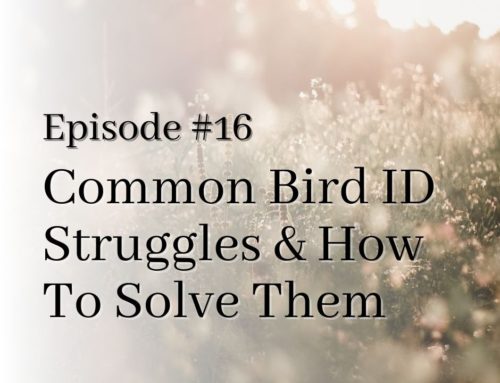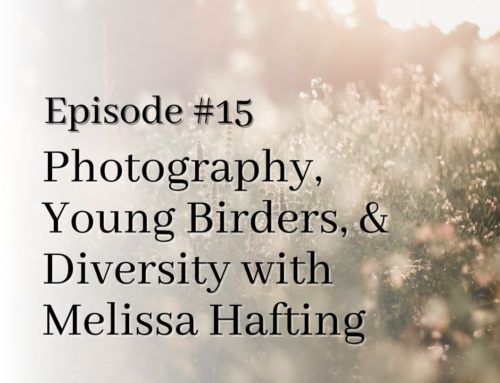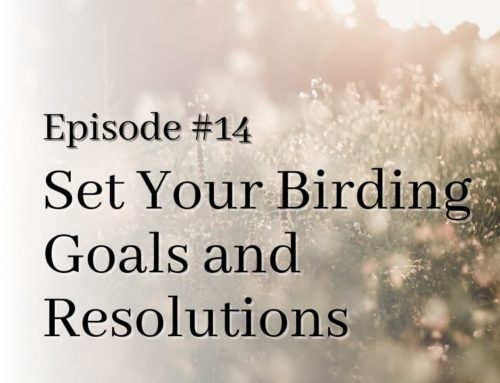Welcome to Episode 13 of the Birding Tools Podcast.
This week on the Birding Tools podcast, I’m going to dive into birding scope basics, including the differences between a scope and binoculars, what to look for when you purchase a scope, and a shortlist of the most highly recommended scope brands.
For your convenience, I’ve included a little cheat sheet of the information I’ll be detailing today, which you can find here!
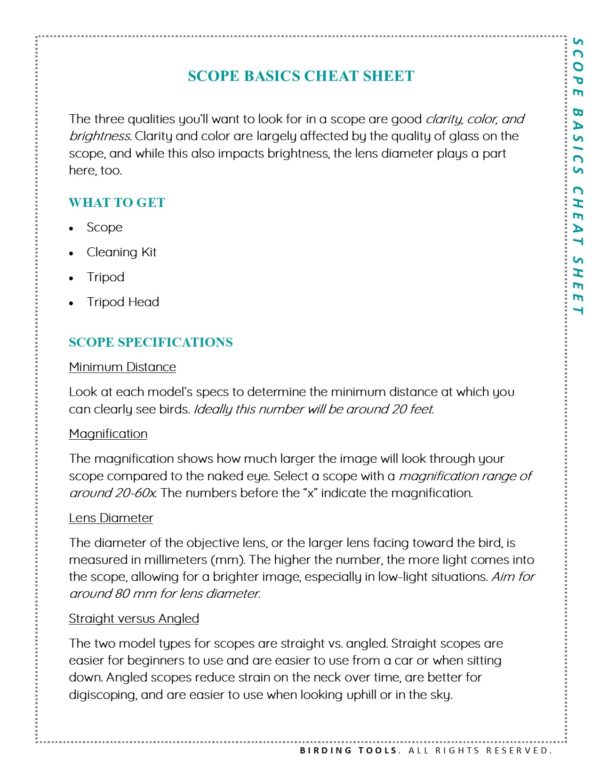
A quick recap:
- Binoculars do not replace scopes and vice versa. Scopes can be really handy when you’re aiming to see birds up close, particularly if they’re pretty far away.
- When you’re looking at scope specs and trying to decide which one to get, look at the magnification range, the lens diameter, whether they are angled or straight, and the price when balancing these considerations with clarity.
- There are scope brands that start out at reasonable prices to those that skyrocket in price. Consider your budget, and remember that if you’re planning to use your scope more often and into the future, it may be worth investing in something a little higher quality to avoid disappointment when you really get on a roll IDing birds through your scope. Don’t forget the accessories that must also go into your cost factor for a scope.
Here’s how the episode goes
[2:05] The differences between scopes and binoculars are important to note when you’re considering the kinds of birds you want to see or the kind of birding you want to do. A scope doesn’t replace binoculars because of the lightweight nature of binoculars and the greater range of motion they offer. Scopes are, however, really handy when you want to see birds farther away.
[4:30] The different specs you’ll want to keep in mind when looking at your scope are the magnification numbers, the lens diameter, and whether the scope is angled or straight.
[9:15] You’ll need some other pieces of equipment to complement your scope, including a cleaning kit and a good quality tripod. Getting a tripod head that pans or moves around in different directions to look at birds and increase your potential range of movement will allow you to enjoy birds more.
[13:00] Some of the top scope brand companies include Celestron, Vortex, KOWA, and Swarovski. These range in price from $250 to $2,500 – and I’d never personally recommend that a beginner birder or a birder new to scoping drop thousands of dollars on a scope from the get-go. Mid-range scopes around $500 are still great for clarity, color, and brightness.
You can also read more about getting started on your birding endeavors on our Get Started page!
P.S., If you need a hand with bird ID, head over to download our free downloadable guide here!
Subscribe & Review Wherever You Get Your Podcasts
Are you subscribed to my podcast? If you’re not, I want to encourage you to do that today. I don’t want you to miss an episode! Subscribe wherever you listen to your podcasts.
Now if you’re feeling extra loving, I would be really grateful if you left me a review over on iTunes, too. Those reviews help other people find my podcast and they’re also fun for me to go in and read. Thank you!
Links Mentioned in this Podcast
- “How to ID Birds” Free Downloadable Guide
- Episode 2 – Ten Things You Need to Know When Selecting Binoculars
- How to Focus Your Binoculars Onto a Bird Video
- Manfrotto Tripod with Panning Head (affiliate link)
- Celestron Scopes
- Vortex Scopes
- KOWA Scopes
- Swarovski Scopes
- Episode 12 – Winter Birding Tips
- Birding Tools Facebook Page
- Birding Tools Instagram Page
Other Ways to Enjoy this Post
We so appreciate you listening to the Birding Tools Podcast! Please see the links below for other ways to enjoy this material.
- Download the transcript
- Join me (and your fellow birders) in the Birding Tools Facebook or Instagram Communities!
